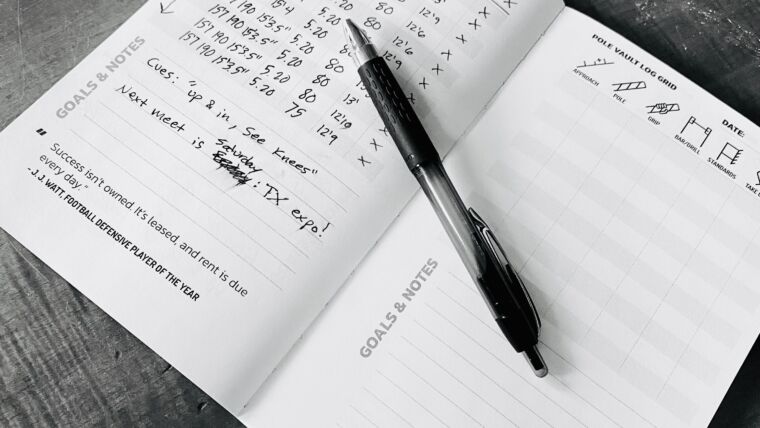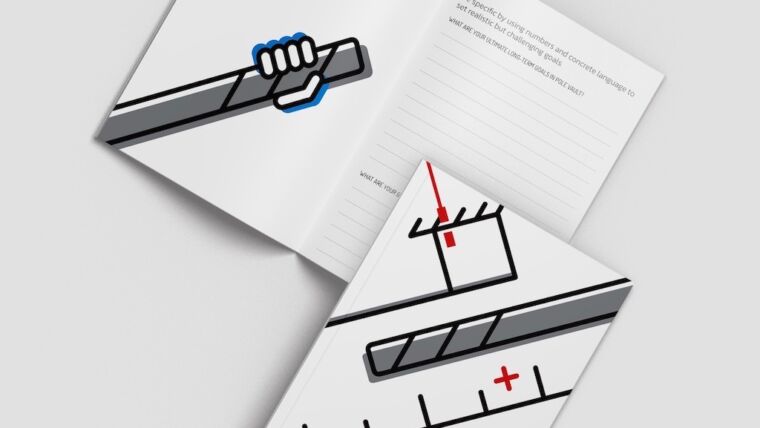It’s time for a deep dive ladies and gentlemen. This one is for all the deep thinkers out there. Please enjoy The Four Noble Truths of the Pole Vaulting PATH according to RISE coach Tim Winder (CW). Take a deep breath…Namaste…
#1: There will be suffering.
In other words, you will not always do as well as you hope to.
Understanding suffering and change.
Accepting suffering and change.
Making the identification of suffering, change what you are doing to achieve your desires.
#2: Unhealthy attachment to desire causes suffering.
In other words, if you are too focused on the height that you wish to clear, then the process it takes to clear that height will not happen.
Changing your heart changes your attitude.
Is what you desire important in the process.
Is your desire a realistic desire
#3: Suffering ends by letting go of unhealthy attachment to desire.
In other words, focus on the process involved in vaulting the best you can and not the height in which you want to clear, or your particular time frame.
- Learning to accept outcomes.
- Your desire does not define you.
- Freeing yourself of your desires.
#4: Walking the path to pole vaulting enlightenment.
In other words, how to train yourself to focus on the process and not the outcome.
- The path to the extinction of suffering.
- Walking the path of process.
- Immersion in the process.
Noble Truth #1: There will be suffering
In order to be good at something, I believe it is important to understand the relationship between suffering and change. The truth be told, you are not always going to accomplish everything you want, when you want to achieve it. That is suffering. Suffering is nothing more than you not getting what you want. Why do we have to suffer? Well now that is the question for all the ages to ponder, but my best guess would be because you are not God. Let me try and explain to you what I mean about suffering. I don’t mean that you cannot achieve your Ultimate Goal. I very much believe that you can. As a matter of fact, if we couldn’t I wouldn’t like coaching, because the achievement of desires/goals is a huge part of the plan. However you first need to understand what I mean by SUFFERING. Suffering means basically, “Not always getting what you want or desire.” It is amazing how many people have been brainwashed into thinking that there shouldn’t be suffering, and that it is almost criminal to suggest that you may not achieve all that you want in your life. Suffering or the embracing of it can be quite beneficial from time to time. It is suffering that causes us to reevaluate goals, make new plans, and actually set ourselves on a course of success. So we all must learn to embrace suffering in order to better put ourselves inline with what we can realistically accomplish from day to day, and season to season.
Acceptance of suffering and the changes that take place because of it are critical in achievement. Athletes must not deny suffering, and they should not get overly upset about it. They must ultimately accept it and use it to make them better. The biggest mistake that I’ve seen vaulters make over the years had nothing to do with there run, plant, or rock back. The mistake was the vaulters inability to accept that things are not always going to workout the way they want, especially in the exact time that they want. In other words the vaulters could not accept anything other than their desires. They could not accept that maybe they should change what they are doing to achieve their desires. They certainly couldn’t accept the advice from the coach that the goal may be too much for now, or unrealistic with what is best at this particular point. The athletes could not accept change from their original goals or desires. So, what happens? Usually they get frustrated, angry and either tank the season, or make things so miserable for themselves and those around them that the result is negative, either way. Soon, doubt factors into the equation. Blaming conditions, coaches, teammate, roommate, classes, your momma, dog and anything else that has been involved in your life up to this point. Frustration, blaming and anger are such negative, destructive emotions. They are not productive at all. They are usually manifestations of decisions that the vaulter made when he or she was deciding what he or she desired. So by not accepting change, and understanding that your desires sometimes may need altering, you put yourself on a path of suffering that could be eased by understanding that your own suffering is directly related to your inability to change what you have, or are doing, and getting on the path of what you need to do.
There are two types of suffering. Inevitable suffering and optional suffering. Inevitable suffering is the kind that is out of our control. A good example of inevitable suffering is the fact that one day we are all going to get old and eventually “cross on over to the other side”. We can’t do anything about it. It is going to happen. Hopefully by making healthy choices, we all can live such a full life that when our number is up, then we understand that it is just step #2 in the living process, and that we are itching to see that great pole vaulting pit in the sky. Inevitable suffering is stuff that just happens that we can do little about it. So… inevitable suffering is, well… inevitable.
Optional suffering is the suffering that is self induced. This kind of suffering is what we control, primarily through our decision making processes. We can choose to suffer anytime we want. Actually we do oftentimes choose to suffer by having a bad attitude, blaming others, criticizing others, swearing, being negative, angry, sarcastic (without humor), making fun of people, using negative words, calling our own shots in vaulting, etc, etc, etc. Maybe we deserve Optional Suffering if in fact we look at the world as something that is happening to us, instead of our reaction to the things that happen. So… optional suffering is, well… optional.
I bet you feel better now, don’t you? I know I do. Most suffering is something that we control. Even if our desires are not always met, we still have choices. We can change to fix the path of suffering that we are on, and we can remain focused on the positive. Hip, Hip, Hurray!!!
Identifying suffering and making changes to achieve your desires is critical in the 1st noble truth of pole vaulting. Many times in vaulting the vaulter’s desires are the things that are messed up. The desired heights that will make them qualify, win, or set a record, etc., are not inline with a desirable path. Although these desires are good and there is nothing bad attached to them, they are not grounded in what it takes to achieve those heights or to win and set a record. I think those kind of desires are not in line with the correct path in pole vaulting. Vaulters who focus too much on the outcome never really understand or focus on the process of what it takes to achieve the outcome they want. Therefore they seldom meet the requirements technically or characteristically, to comfortably do what they want to do. So a problem that may show up at the end of the season (not achieving the goal), started in the beginning of the season by not focusing on what is important. The shortest path between two points is a straight line. Every time the vaulter deviates off the path because of a misinformed decision the line/path gets crooked. A crooked line doesn’t mean that a goal can’t be achieved, but it usually means that it will take more time to achieve the goal.
Noble Truth #2: Attachment to Desire Causes Suffering
Your suffering will end when you let go of your attachment to your desire. This does not mean to not have goals and to not work hard to reach your ultimate desire. It is merely a shifting of your attachment to your desires. You see, in vaulting, your desires are not bad, but your attachment to them is bad. Sometimes vaulters feel that they are no good unless they reach a certain height. They compare themselves to others performances. Vaulters will oftentimes feel that their desires will make them feel better or make them more important, or make them blah, blah, blah. The truth is, achieving a height goal or desire will not do any of those things. All the achievement of a height goal means is that you have jumped that high. It says nothing of what kind of person, son, daughter or human being that you are. But…. The path that you have taken to that height says volumes about who you are, and what kind of person you have become on the way to attaining your desire. Your attachment to your desire must be let go, or at least loosed so that the desire does not overtake you and make you into someone you are not. Releasing the attachment to your desire is difficult because it takes trust and means that you will have to go against most things that most coaches/people think about achievement. Let me be clear, once again, I believe in goal seeking and achievement. It is just that I like to go about it in a productive, less wasteful way, which means to not focus on the desire, but on the process of acquiring that desire.
There are 3 types of desire that affect vaulting performance. They are sense desires, avoidance desires, and becoming desires. Unhealthy attachment to these desires is detrimental to vaulting performance. Let me state again that there is nothing wrong with desires. What is wrong is an unhealthy attachment to your desires.
Sense desires are desires that please your senses of taste, touch, vision, smell, etc. Obviously you can see how the sense of taste could get in your way as a pole vaulter. If a vaulter enjoys the sense of taste too much they could fall into the trap of unhealthy eating which could lead to becoming overweight and/or become injured because of being slow and lethargic.
Avoidance desires are desires that cause you to want to get rid of something that is unpleasant. Avoidance desires can be very positive if in fact you are getting rid of something that can cause extreme sadness, anger, or something that is dangerous to you. What I am speaking to here is the avoidance desires that cause you to not be the best you can be by avoiding all things unpleasant. For instance if you avoid physical pain and discomfort in vaulting well you will never be physically tough. Without physical toughness in pole vaulting you will not achieve mental toughness, so you can see that avoiding things is not always conducive to improved performance. Avoidance desires are better represented in vaulting by looking at the avoidance of training, risks, competition, etc.
Becoming desires are desires that cause you to want what is missing. Let me clarify. Becoming desires make you believe that by achieving a desire or goal that you fill up in yourself what is missing. For some reason a vaulter may think that they have more worth as a human after clearing a given height. You won’t feel any different for long. Actually, your euphoric “Becoming Desire”, will last exactly as long as the next time that you vault.:^) At that point you will realize that you didn’t become superman or women by clearing 18 feet or 14 feet. Actually you are still the same person who has to work hard and keep it together to perform well. Pole vaulting is good for humility. :^) The new PR has done nothing to change who you are, it is just that… a new PR. The good feeling of satisfaction after an accomplishment is what doing well is all about. The thing about accomplishing goals/desires is this…. “They Change”. As soon as the goal/desire is accomplished then the desire is changed. This is good so long as the desire is not a “becoming desire”, because if it were then you would never reach happiness in your life here on earth.
Noble Truth #3: Suffering ends by letting go of unhealthy attachment to desire/height.
Does this mean that I should not have goals? No. Does this mean that I should be this vaulter flopping around with no standards or goals with no sense of direction? Again…. No. Does this mean that I should let go of my unhealthy attachment to my desire? YES! It is the unhealthy attachment to your goal that is a negative. The attachment or crutch is the weak part of the equation. The attachment is what causes you to obsess on beating people, vaulting heights, winning championships, and yes….Looking at the freakin’ bar, instead. :^) It is your attachment to the height/desire that causes you to miss. Ever freaked out in a competition? Ever had your heart feel like it’s pounding out of your chest? Ever feel like your head is spinning at the end of the runway? Ever had your coach ask you, “What’s it feel like?”, and you had no idea what was going on in your vault? If you have, it’s because of your attachment to your desire, your inability to focus on the process, and your suffering will continue until you lose that attachment to your desire, and immerse yourself in the process. It is your obsessive desire to earn a sense of worth by clearing the bar that cuts your legs out from under you every time. Your attachment to the height is what causes you to stride out, have a bad plant, not rock-back all the way, flag out and stare at the bar. I promise… It’s true! :^)
The RISE vaulting technical and training model is based on the ending of your suffering by ending your attachment to the bar. When I say, “see you shins at your top hand in the rock back”, I’m trying to get you to stop looking at your desire (the bar). When I say “work your last 5 strides of your approach”, I’m trying to get to focus on the mechanics (the process) instead of thinking about wind, how slow you feel that day, height etc. Why? Because if you want to end suffering, then you must eliminate your attachment to desire (bar). In other words, if you focus entirely on the process of vaulting and 100% lose yourself in that process, then you can eliminate inevitable suffering that is out of your control and minimize the optional suffering.
Of course you want to win, set a record, and become a champion. I also want this for you and for our team, but I do not want to win, set a record or become a champion, because I need to (unhealthy attachment to desire). I want it only if it is a side effect of getting lost in the process of doing things the way they should be done. This is much more fun, and is always more pleasant.
Noble Truth #4: Walking the P.A.T.H. of Pole Vaulting Enlightenment
Ok… now that all that stuff has been identified and dealt with how do we do it? How is it, in a world that basically has many other people in it, that don’t play with these cards, do I or we “Walk the Path of Pole Vaulting Enlightenment”? Well… that is a tough one. It is not easy. It takes practice. It takes practice with the greatest amount of tenacity imaginable. It requires a desire to become a better person. It requires a person who understands that there is more to life than personal bests in vaulting. It requires that a person’s identity not be wrapped around pole vaulting. Pole vaulting should be a delightful part of your life, but it must not be your life. As a matter of fact, it should not define who you are as a human on this earth. It is an enrichment activity. Nothing more. Nothing less. But, and let me be clear, pole vaulting is a very important enrichment activity. :^)
What is the PATH of becoming a better pole vaulting human?
P = Patience – to wait without complaint.
A = Attitude – choosing to have an outlook that is one of optimism and realism rather than pessimism.
T = Tolerance – recognizing that others may have beliefs that are different than your own, and not judging them for it.
H = Humility – Choosing to respond to others with patience, a positive attitude and tolerance.
What are the other parts of the path?
Path #1: Correct Understanding
-Understand the parts of your PATH
-Understand the different Pathways
-Understand the RISE Level System of Pole Vaulting
-Understand the program
-Understand the vaulting model
-Understand the vaulting system
Path #2: Correct Speech
-Embrace Silence. Silence is the most underrated virtue of mankind.
-Embrace positive words. Eliminate Negative words.
-Embrace a moral conscience. Eliminate Swearing.
-Embrace Accountability. Eliminate Excuses.
Path #3: Right Motivation
-Vault as means of self improvement
-Vault because it causes you to push yourself
-Vault because if causes you to leave your comfort zone
-Vault because it makes you feel good.
-Vault because it is fun
Path #4: Correct Focus
-Focus on the whole process
-Focus on your own performance
-Never compare yourself to others.
-Live in the moment.
-Lose yourself in your technical process performance
Path #5: Correct Commitment
-Immerse yourself in the system
-Immerse yourself in your PATH
-Immerse yourself in your team
-Immerse yourself in the Pole Vaulting Technical Process
Path #6: Correct Heart
-Compassion for your coaches
-Compassion for your teammates
-Compassion for your family
-Compassion for your competitors
-Compassion for your enemy.
Done.
-CW
RISE Higher.




